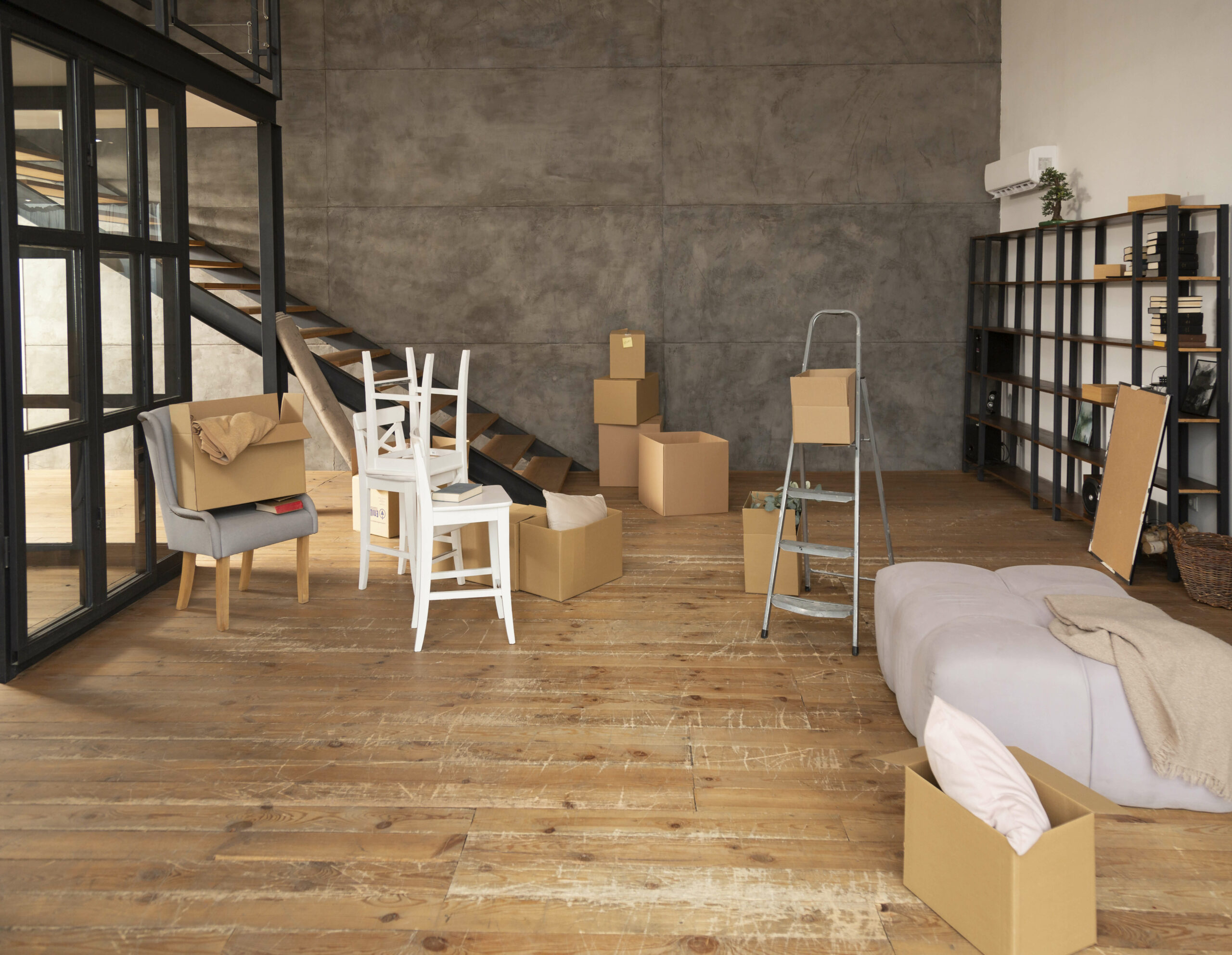In a bustling city like New York, space is a luxury, and the need for long-term storage solutions often arises. Whether you’re downsizing, renovating, or temporarily relocating, ensuring your furniture survives the rigors of long-term storage is essential to maintain its beauty and functionality. In this guide, we’ll explore valuable tips and strategies to protect your prized possessions during extended storage periods. From the initial preparations to the choice of storage facilities, we’ve got you covered.
Understanding the Importance of Proper Long-Term Storage
Long-term storage, as the name suggests, involves safeguarding your furniture and belongings for an extended period, often several months or even years. This could be necessary for various reasons, such as:
- Temporary Relocation: Whether it’s a job assignment in another city or an extended vacation, keeping your furniture in storage ensures it remains safe and secure while you’re away.
- Downsizing: In New York City, where space is at a premium, you might need to downsize your living space. Storing furniture you can’t accommodate in your new home allows you to keep cherished items without cluttering your living space.
- Renovations: When renovating your home, especially if it involves extensive work, moving your furniture into storage helps protect it from dust, debris, and potential damage during construction.
- Seasonal Storage: New York experiences varying weather conditions. Proper storage keeps your furniture safe from humidity, extreme temperatures, and pests during seasonal changes.
1. Prepare Your Furniture for Storage
Before placing your furniture into long-term storage, it’s essential to prepare it properly:
- Clean Thoroughly: Dust and dirt can accumulate over time and damage furniture finishes. Clean each piece meticulously to remove any contaminants.
- Disassemble When Possible: Disassembling furniture, such as tables or bed frames, can save space and reduce the risk of damage during transportation and storage.
- Wrap and Protect: Use appropriate protective materials like bubble wrap, furniture blankets, or plastic covers to shield your items from dust, scratches, and potential moisture damage.
- Label Everything: Clearly label all parts and pieces, making reassembly easier when you retrieve your furniture from storage.
2. Choose the Right Storage Facility
Selecting a reliable storage facility is crucial for the safety of your furniture during long-term storage. Consider the following factors:
- Climate Control: Opt for a storage unit with climate control, especially in a city with extreme weather conditions like New York. This helps maintain stable temperature and humidity levels, preventing damage from moisture and temperature fluctuations.
- Security: Ensure the facility has robust security measures, including surveillance cameras, access control, and alarm systems, to safeguard your belongings.
- Accessibility: Choose a storage facility that offers convenient access hours in case you need to retrieve items periodically.
- Insurance: Check if the facility provides insurance coverage for stored items. If not, consider purchasing your own storage insurance for added peace of mind.
Reviews and Recommendations: Research online reviews and seek recommendations from friends or family who have used storage facilities in NYC. A reputable facility can make all the difference in the long-term storage experience.
3. Proper Packing and Stacking
Once you’ve selected the right storage facility, it’s time to pack and stack your furniture correctly:
- Use Pallets: Elevate your furniture off the ground using wooden pallets to prevent moisture from seeping in. This also allows for better air circulation.
- Avoid Stackable Furniture: If possible, avoid stacking heavy items on top of each other. This reduces the risk of damage from the weight of items above.
- Maximize Space: Utilize the storage space efficiently by placing smaller items inside larger ones and filling empty spaces with cushions, pillows, or blankets to prevent shifting.
4. Regular Check-Ups
Even in long-term storage, it’s essential to check on your furniture periodically:
- Inspect for Damage: Visit your storage unit occasionally to inspect your furniture for any signs of damage, pests, or mold.
- Rotate Items: If feasible, rotate the position of your items to ensure even exposure to temperature and humidity changes.
- Ventilation: If the storage unit allows, crack a window or door slightly to ensure ventilation and prevent musty odors.
5. Professional Movers for Safe Storage
When it comes to moving your furniture into storage, rely on the expertise of professional movers, especially in a city as dynamic as NYC. Hiring the best movers in NYC, known for their white glove furniture delivery services, can make a significant difference in ensuring the safety and condition of your furniture during the entire process.
Professional Movers Bring Several Advantages to the Table
- Expertise: Experienced movers understand the nuances of handling furniture, ensuring it’s properly packed, loaded, and unloaded to prevent damage.
- Efficiency: Movers streamline the process, saving you time and energy during a potentially stressful move.
- Safety: Movers have the necessary equipment and expertise to handle heavy or delicate items safely, reducing the risk of injury or damage.
- Insurance: Reputable movers often provide insurance coverage for your belongings during transit and storage, offering added protection.
6. Interior Designer Receiving Warehouses
If you’re working with an interior designer for your home project, inquire about their receiving warehouse services. Many interior designers in NYC offer this service, which involves receiving and storing furniture and decor items on your behalf until they’re ready to be placed in your home.
Working with an interior designer and their receiving warehouse offers several benefits:
- Coordination: The designer can coordinate the delivery and storage of your furniture, ensuring everything arrives at the right time.
- Quality Control: Designers inspect items upon receipt to check for any defects or damage, ensuring you receive high-quality furnishings.
- Customization: Designers can create a tailored storage plan that aligns with your project’s timeline and needs.
- Convenience: This option allows you to focus on your project’s design aspects while leaving the logistics to professionals.
7. Preserve Furniture Finish
Preserving the finish of your furniture is essential for its long-term storage. Wood, in particular, can be sensitive to changes in temperature and humidity. To protect your furniture’s finish:
- Apply Wax or Polish: Before storage, consider applying a thin layer of wax or furniture polish to create a protective barrier. This will help prevent the wood from drying out or absorbing excess moisture.
- Use Furniture Covers: Invest in high-quality furniture covers made from breathable materials. These covers shield your furniture from dust and debris while allowing air circulation.
- Avoid Direct Sunlight: If your storage area has windows, ensure that your furniture is not exposed to direct sunlight, as it can cause fading and damage to wood finishes.
8. Documentation and Inventory
Maintaining a detailed inventory of your stored furniture is a wise practice, especially for long-term storage. Create a digital or physical record of all items in storage, including descriptions, photographs, and their condition. This inventory serves several purposes:
- Insurance Claims: In the unfortunate event of damage or loss, a comprehensive inventory will expedite the insurance claims process.
- Tracking Condition: Regularly update your inventory with any changes in your furniture’s condition. This helps you stay informed about the state of your stored items.
- Peace of Mind: Knowing that you have a record of your belongings provides peace of mind, allowing you to focus on other aspects of your life without worrying about your furniture.
9. Pest Control
Pests can be a significant concern when it comes to long-term storage. In a bustling city like New York, even the cleanest storage facilities can be susceptible to pests. To safeguard your furniture against unwanted visitors:
- Seal Entry Points: Ensure that your storage unit is tightly sealed to prevent pests from entering. Use silicone caulk or weather stripping to seal gaps around doors and windows.
- Pest-Resistant Materials: Consider using pest-resistant materials such as plastic storage bins with tight-fitting lids. Avoid cardboard boxes, as they can be vulnerable to pests.
- Pest Deterrents: Some natural pest deterrents, like cedar blocks or lavender sachets, can help keep pests at bay. Place them strategically in your storage unit.
10. Regular Maintenance
Even though your furniture is in storage, it’s crucial to maintain it regularly:
- Polishing: Periodically polish your furniture to prevent the wood from drying out or becoming dull. Use a suitable wood polish recommended by furniture experts.
- Checking Hardware: If your furniture has hardware like knobs or handles, ensure they are tightened and secure. Loose hardware can cause damage or scratches.
- Reorganization: Occasionally rearrange the items in your storage unit to avoid prolonged pressure on one spot of a piece of furniture. This prevents indentations or warping.
11. Retrieve Items Mindfully
When the time comes to retrieve your furniture from storage, approach it mindfully:
- Plan Ahead: Before you start removing items, plan where each piece will go in your home. This avoids unnecessary handling and potential damage.
- Inspect Thoroughly: Inspect each item as you remove it from storage. Check for any signs of damage or pests and address any issues promptly.
- Professional Assistance: If you have large or delicate items, consider enlisting the help of professional white glove movers. They have the expertise to handle your furniture with care during the removal and transportation process.
By implementing these additional tips, you’ll ensure that your furniture not only survives long-term storage but also remains in excellent condition, ready to adorn your living space once again. Whether you’re storing antique heirlooms, contemporary pieces, or sentimental furniture, these strategies will help preserve their value and beauty for years to come. Remember that taking the time and effort to protect your furniture now will pay off when you finally reintroduce these cherished pieces into your home.
Conclusion
Ensuring your furniture survives long-term storage in a bustling city like New York involves careful planning and the use of professional services like white glove movers, interior designer receiving warehouses, and top-notch storage facilities. By following these steps and seeking expert assistance when needed, you can preserve the beauty and functionality of your furniture throughout its storage journey. Whether you’re downsizing, renovating, or temporarily relocating, your cherished belongings will remain safe and ready to grace your living space when the time comes.




